In my mailbox:
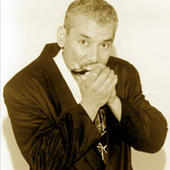
DEAR FRIENDS AND BLUES LOVERS!
BLUES HARMONICA PLAYER, GUITARIST AND VOCALIST
ANDY SANTANA WILL APPEAR AT THE
HALF MOON BAY BREWING COMPANY
ON SUNDAY JANUARY 18TH 4-8PM
——
To visit Andy Santana’s website, please click here
In my mailbox:

DEAR FRIENDS AND BLUES LOVERS!
BLUES HARMONICA PLAYER, GUITARIST AND VOCALIST
ANDY SANTANA WILL APPEAR AT THE
HALF MOON BAY BREWING COMPANY
ON SUNDAY JANUARY 18TH 4-8PM
——
To visit Andy Santana’s website, please click here
Story/Photos by John Vonderlin
Email John ([email protected])
JOINING THE HERD BY JOHN VONDERLIN

Hi June,
Normally when I venture out to the Coastside, “far from the madding crowd’s ignoble strife,” is a prerequisite of any destination I seek out. Yesterday, a mid-Winter weekend, with fabulous beach weather, and one of the very lowest tides of the year, I suspected that would be near impossible. So, instead we set our sights on making a Circum-Pillar expedition, starting at the Princeton side of the base of Pillar Point. Holy Salmon!, the Hordes had arrived ahead of us and when we got there they had filled all the parking lots. Parking in a long line along the access road, we joined the stream of people heading to the beach. Many had their dogs, and five gallon buckets, obviously intending on harvesting from the reefs and mudflats, of which vast stretches were already exposed by the rapidly receding tide.
By the time we got to the area below the cliffs, that is usually submerged, blocking further progress around the Point, it was obvious that we were going to be sharing our adventure with many others. In fact, there were so many people on the section of the reef leading out to the string of rocks that ends with Mushroom Rock, and bounds Mavericks to the South, that I lost my enthusiasm for joining them there. I had hoped to get some close-up photos of Mushroom Rock and the channels between the rocks, that knowledgeable surfers can use as a respite when caught inside during monstrous sets.
But, with a whole herd of folks tromping on all sorts of flora and fauna, many of them collecting anything of interest or potential edibility, I couldn’t justify adding to the carnage.
So, it was back to our original purpose, to accomplish the first Circum-Pillar navigation ever recorded. In the time-honored tradition of European Explorers, we completed the circuit, assumed we were the first discoverers, claimed it as our territory, renamed it Point Loma Mar North, in honor of our home country, and gathered rocks to repel any usurpers that might challenge our supremacy.
When none appeared, and being satisfied at our “Veni, Vidi, Vici” moment, we returned to our car. On the way back we observed something that made me shake my head and swear I’d stick to the wilds of the southern Coastside in my future expeditions. A herd of some kind of giants, with large wheels for feet, were silently rolling along the path below us. I can’t imagine the Aztecs, when first viewing the Conquistadors in armor, on horses, were any more startled. We approached them and they spoke English, saying they were of the “Segway tribe.” Disconcerted at this new type of invaders, we repaired to Cameron’s, and drowned our harumphs in glasses of ale. Enjoy. John
—————-
There were odd rocks along the way and a fairly rare Leather Star in one of the pools I passed. This slimy species of Sea Star, rarely seen here has the smell of garlic, and when it touches the “swimming” anemone (Stompha) or purple sea urchins they take off as fast as they can, not something I usually associate with those types of critters.
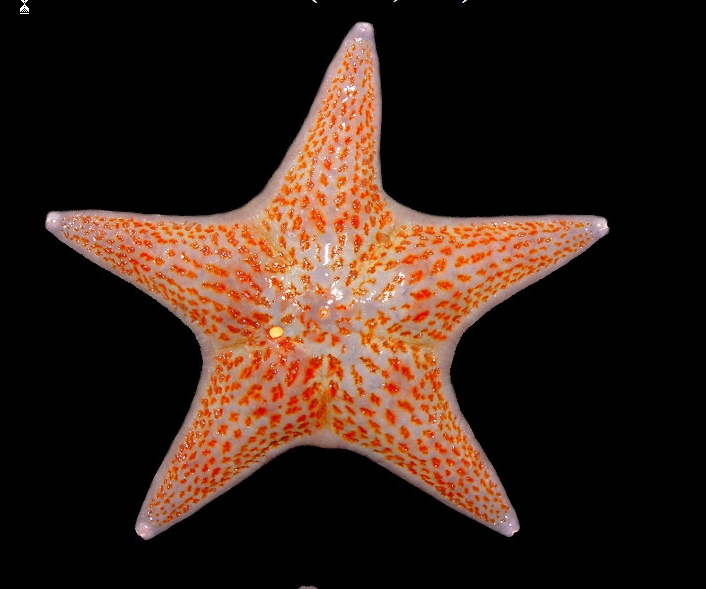

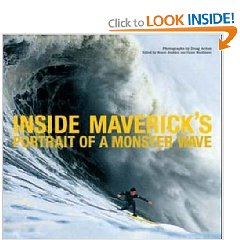
By authors Bruce Jenkins, Grant Washburn and Doug Acton, this is the “hot” book on Maverick’s. I will be reviewing it for the San Mateo County History Museum’s March newsletter.
I also have this great book by Matt Warshaw.
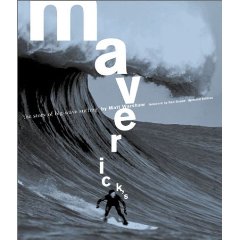
“Let the fish be fish”
Mini-Interview with Rob Tillitz (RT)
To visit Rob Tillitz’s website, please click here
1. Do you have more to say about the government’s involvement? What do you mean by that? What kind of involvement, exactly?
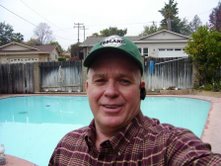 RT: Before 1978, and the 200-mile limit, the ocean was patrolled by only a handful of State Fish & Game boats. The Coast Guard’s duty was to save lives, and that was it. Well, they cleaned up oil spills too. But with the 200-mile limit, the Feds assumed immense powers, and congress and courts bestowed almost limitless jurisdiction upon the Coast Guard. That is when the Coasties began to enforce laws, and implement fishing regulations to boot. They were deputized, made into peace officers, and all issued sidearms. As well, marine biologists by the score jumped on the generous payroll of the newly formed National Marine Fisheries Service (NMFS), and with stats based on knowledge that most fishermen believed came from the land of Oz, those biologists began recommending shorter seasons…or no seasons. Don’t get me wrong, there are less fish now than before, but it is mostly not the fishermens’ fault. No money for hatchery programs, and dammed water diverted elsewhere has killed the salmon fishery. In my opinion the bottom fishing industry was assassinated by Production Credit Association: Federal Farm Credit System institutions that had direct lending authority to make loans to any fisherman who could mark an X. They increased the fleet by thousands of percentiles, then when many could not pay, cause the NMFS had chopped off the seasons, they took the boats back and resold them for pennies on the dollar.
RT: Before 1978, and the 200-mile limit, the ocean was patrolled by only a handful of State Fish & Game boats. The Coast Guard’s duty was to save lives, and that was it. Well, they cleaned up oil spills too. But with the 200-mile limit, the Feds assumed immense powers, and congress and courts bestowed almost limitless jurisdiction upon the Coast Guard. That is when the Coasties began to enforce laws, and implement fishing regulations to boot. They were deputized, made into peace officers, and all issued sidearms. As well, marine biologists by the score jumped on the generous payroll of the newly formed National Marine Fisheries Service (NMFS), and with stats based on knowledge that most fishermen believed came from the land of Oz, those biologists began recommending shorter seasons…or no seasons. Don’t get me wrong, there are less fish now than before, but it is mostly not the fishermens’ fault. No money for hatchery programs, and dammed water diverted elsewhere has killed the salmon fishery. In my opinion the bottom fishing industry was assassinated by Production Credit Association: Federal Farm Credit System institutions that had direct lending authority to make loans to any fisherman who could mark an X. They increased the fleet by thousands of percentiles, then when many could not pay, cause the NMFS had chopped off the seasons, they took the boats back and resold them for pennies on the dollar.
2. Are you saying that a fisherman cannot make enough money to support a family? A fisherman could support him or herself.
RT: There are many that are not only making it, but making it well; putting their children through college. Gene Law, originally from El Granada, and now from Newport, Oregon, just last year was proud to announce that his oldest son earned a doctor’s degree from a prestigious East Coast University. Gene has always worked hard, and it looks like the apple didn’t fall far from that tree. Dr. Matt Law is a doctor of physics and I understand was snapped-up instantly upon graduation. I know many fishermen that continue to do very well. For someone to start anew, it would take hard work and dedication–a level head about saving money for lean times–but it could be done.
3. Kids don’t grow up and say they want to be a fisherman, do they? But, as you say, somebody has to catch the fish. Who will catch the fish?
RT:: Fishermens’ sons and daughters do say that. Fred Sears of Morro Bay has a daughter, Heather Sears, that said that, and is now a highliner up in Alaska. She’s in her mid-twenties and started just in this new millennium. And there are three are those kids like me that fish creeks and lakes when young, and dream of a career on the ocean. They will catch the fish.
4. We, in Half Moon Bay, used to have great fishing at our front door. Any theories on what happened?
Rt:: NOT “Global Warming,” in case you were wondering how I or my brethren feel about that. I outline several theories in my preceding answers. It is complicated, and I think there are many right answers. It is sort of like the immigration problem: It doesn’t matter who you listen to there, they all make compelling points. The fish will be back. Mother Ocean will rejuvenate herself, and when it happens, it will happen quickly. Just as recently as 2005, salmon and crab fishermen had record breaking seasons. Small, 40-some-foot boats had million-dollar years. There were more crab and salmon landed for a couple years straight than those NMFS biologists could ever have imagined possible; not even if they lived in the land of Oz! Records were not only broken, they were doubled. Thus, there are still fish at your front door, just not every year. Even the sports fishermen have to put some fish in the freezer, set aside something for the down years if they wish to eat.
5. 2. Please explain why fishing was different before 1978. What, exactly, happened in 1978. How did the gov broaden their powers? What new powers did they gain? Was a law passed?
RT: It was the 200-Mile Limit created by Congress. Before, International water started at 12 miles out. With the 200-Mile Limit the Federal Government took control of, well, an increase of 188 more miles; up and down the coast I don’t know how many more millions of square miles this amounts to. What it meant was their patrol area increased enormously, so they therefore put on an enormous force to govern the waters. Until they made this move, and as I’ve said, the ocean was the last frontier, virtually lawless save for a man’s good honor. Then the Feds took over and got into everyone’s lives as only they know how to do. For me, it was sad. The end of an era: History gone by.
6. We’ve got more restaurants in Princeton; it’s kind of like it was in the 1940s. Back then the fishermen who also sometimes owned the restaurants provided the entrees on the menu. Will that happen again? Will the fishermen at Princeton supply the fresh fish for the local restaurants there?
RT: I think they do when seasons and demand meet in those perfect circumstances. The problem for a fisherman selling to restaurants, however, is the restaurant can’t take all the product, thus the fisherman must sell the bulk to the fish wholesaler who maintains a hoist out on the end of Johnston’s Pier. And the wholesalers don’t like it when one of their regular boats sells to one of the wholesaler’s regular buyers. It bypasses the middle man. Thus, to keep peace and a good working relationship, most fishermen go fishing and sell to their regular buyer when they come into port. The two entrepreneurs in that way stick to their own vocations, and the fisherman does not have to try to market product when he comes home after a long day.
7. What’s it like today for a fisherman coming into the harbor with his catch? Does the fisherman sell some of his catch to the restaurant owners? And does the balance go to the wholesaler? Is the wholesaler on the pier?
RT: You know, it’s been a few years since I delivered fish into Princeton. Based, however, on what I hear described by friends in the business, not much has changed. Most fishermen go fishing and sell to one particular wholesaler. Guys will switch around sometimes, but usually they get one buyer and stick with him, or her. It becomes a working relationship. Though it has become more popular for fishermen to sell their product from right off the boat–that’s actually been going on for years. Particularly with albacore and crab. That is because the albacore can be held, frozen, on board for quite sometime, and the crab can be live-tanked for a week or so, too. This allows a fisherman to go fishing when the weather’s good, then sit on the boat during the rough seas and sell for a higher price. And, yes, the wholesalers occupy that building out on the very end of the pier. Each wholesaler will control one hoist. The hoists are imperative for unloading fish.
The names in Michael Koepf’s book (1998; Broadway Books) may have been changed to protect the innocent but everybody who grew up spending time at the harbor knows who all the characters are. The author is a member of a famous Coastside fishing family.
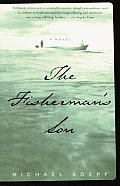
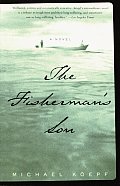
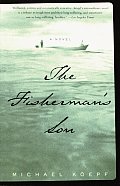

Fisherman-author Rob Tillitz (to visit his Fishtales website, please click here) moved from Oakland to one of the most isolated parts of the Coastside when he was a little kid. Can you see the Google Earth map below? Rob has marked the location of the family home in Native Son’s Park.

His first novel, Bootlegger’s Cove, which Rob says will be out in a few months, takes place at once-isolated Bootlegger’s Cove, south of Pescadero. I hope to run some chapters from the novel.
Mr. Tillitz’s family owned Pinky’s restaurant at Gazos Creek, once a very remote place on the South Coast, so I am certain Mr. Tilltiz’s book will be a page turner. He says: “This is the Coastside book everybody has been waiting for.”Rob Tillitz’s follow-up book takes place at Princeton-by-the-Sea; it’s called: Eyes Like Half Dollars.
Rob says: The second novel starts up where Bootlegger’s Cove leaves off, and Eyes is a murder mystery that takes place in and around Princeton.”
I say: Hurry up and publish the books. Let us see what you’ve been up to!
———————
I’ve posted a couple of chapters from Rob Tillitz’s new book Bootlegger’s Cove at pescaderomemories.com
Scroll down a bit and you’ll see Rob’s work.
From John Vonderlin
Email John ([email protected])
The cartoon, below, appeared in the San Francisco Call, 1912. On a more serious note, me, June, wants to remind you that the “Call” was a progressive newspaper, often drawing attention to finding solutions and help for the poor and helpless. When you laugh out loud, that’s the context. Not that funny, huh?

When facing an unknown future, it’s okay to have a glass of pink champagne. And this glassful was delicious.
That’s Christian, the bartender, btw.

(Image: Fish in the aquarium at the Crab Landing Restaurant.)

On the spur of the moment, Burt and I walked over to Princeton and enjoyed a delightful lunch at the new Crab Landing Restaurant. We sat at the bar and ordered oysters (really fresh, really good). We also shared a warm crab.
Crab Landing is a beautiful place. You’ll feel pampered, you’ll feel like you’re on vacation. We sure did.

Nearby, the popular, unpretentious Mezza Luna Restaurant is opening a cafe. Looks like it will be a take-out with outdoor
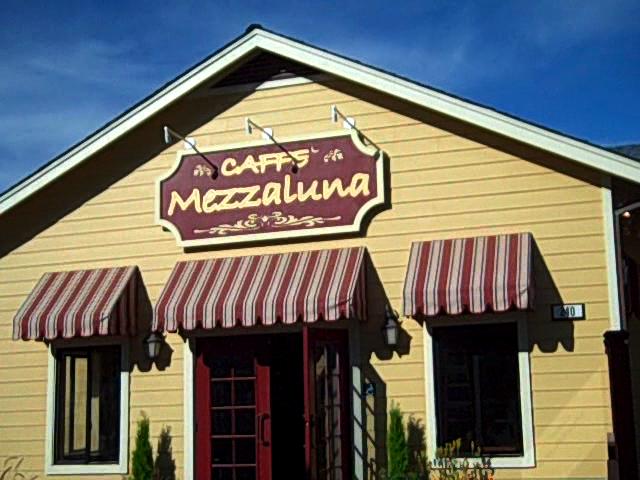
seating. I could imagine evenings by the picturesque harbor, the warmth of friendship and a good meal.
After a half-century- long nap, Princeton-by-the-Sea is wide awake and the funky fishing village is “hot.”
Someday, when the economy is better, these exciting new places will be booming.
Instead, we decided a survey of the Fitzgerald Marine Reserve and an attempt to check out the northern side of Pillar Point would be safer, if not as exciting.
First we tried the parking lot near the Moss Beach Distillery, but decided that although the steep, and obviously well used trail leading to the beach was possible, the TRAIL CLOSED sign and a bunch of words like EXTREMELY DANGEROUS on it made that route a poor choice.
So it was back in the car, and with a “maze-like” drive through the residential area along the bluff, we arrived at the newly rehabilitated P.O.S.T. Trail along the bluffs just north of Pillar Point. It was very civilized, but had boring views, given how far safety and erosional concerns have placed the trail from the blufftop in many places. But, I’m spoiled and most people would be satisfied with the endless ocean views. When you were close to the edge, thanks to the low tide, the complex structure of the reef that is Fitzgerald Marine Reserve is laid out before you.


That intensity of focus on where the next safe and “murder-free” step was, left us unaware of what was coming next. Until having reached rocks not heavily covered with slimy growth, we looked up and there it was. An awesome walk-through arch. A huge arch, whose hole was the only path through the promontory blocking our way to the next cove.



